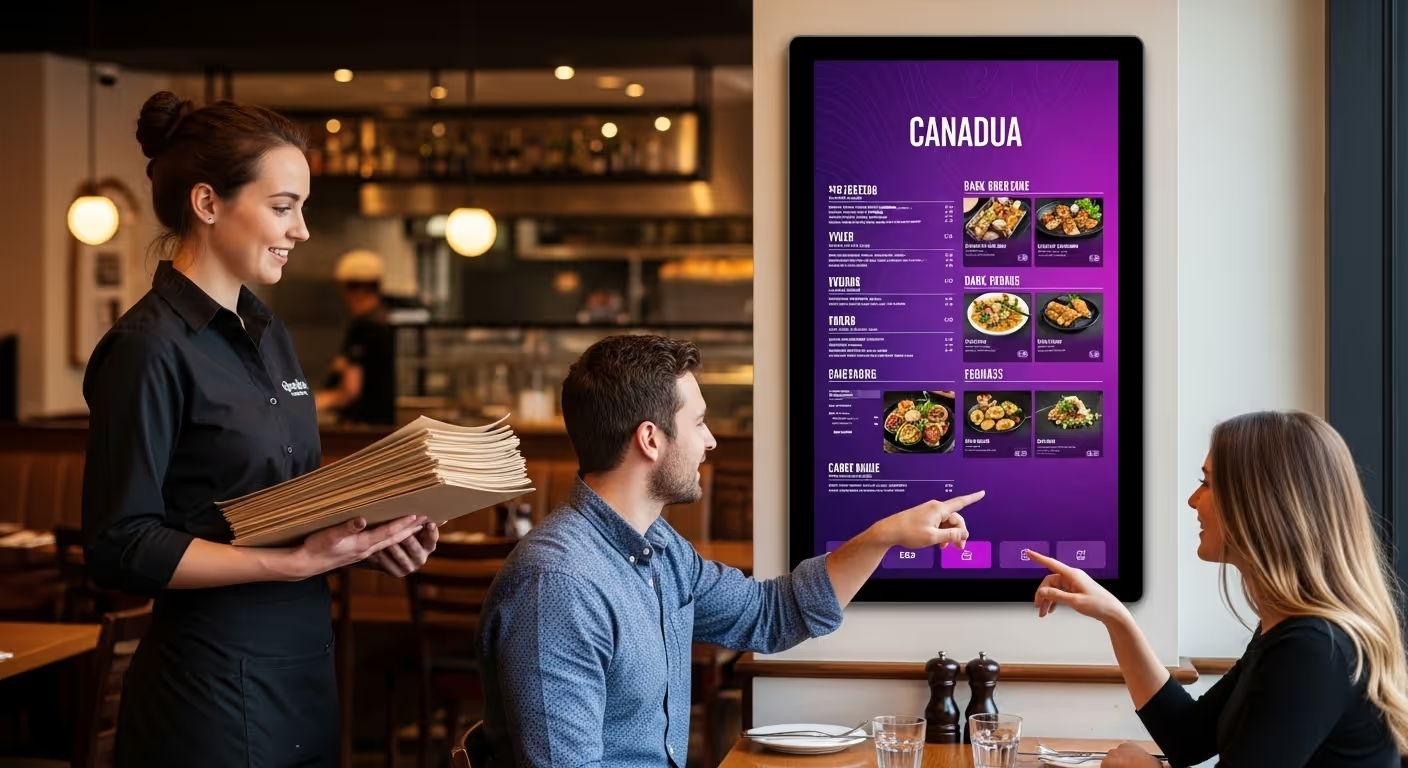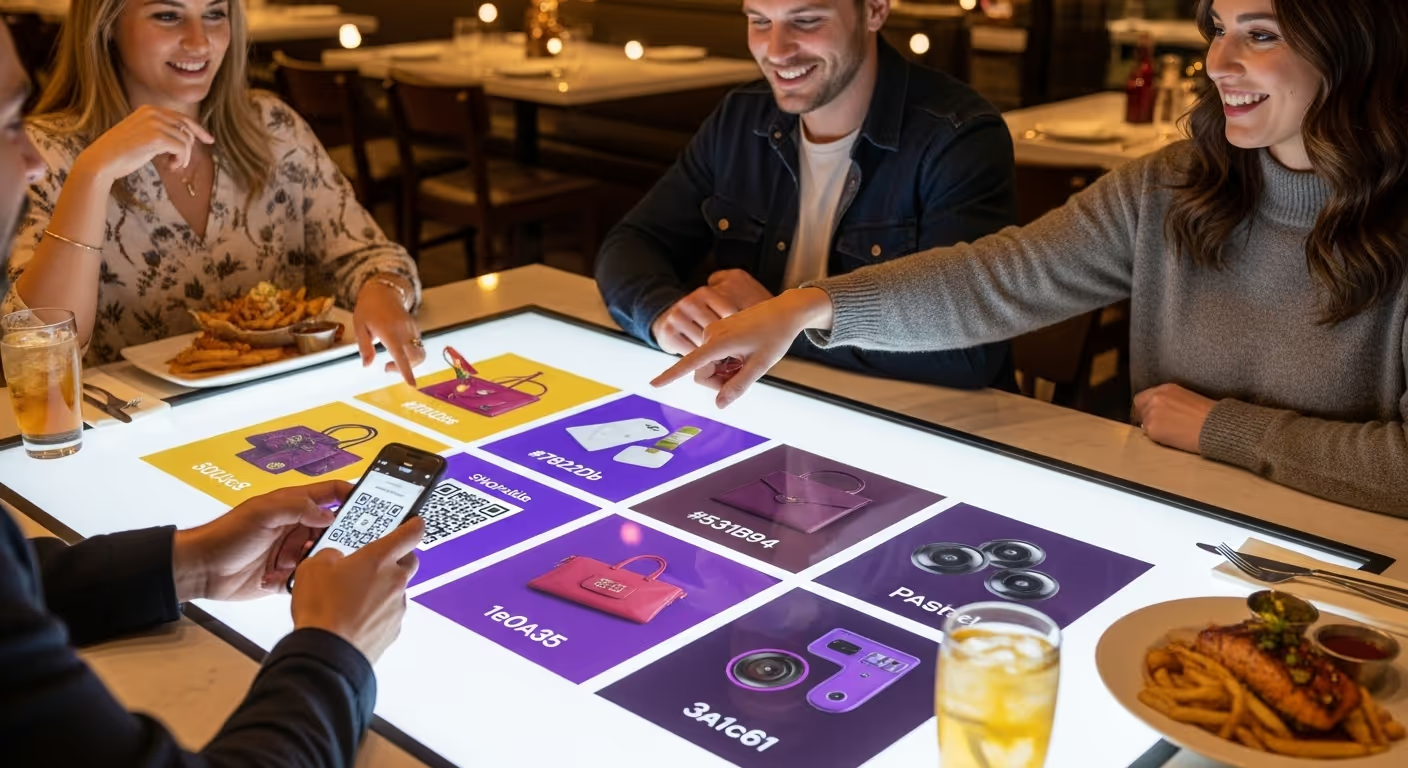What is dwell time?
Dwell time is the length of time a person spends in front of a screen or within an advertising environment. In Digital Out of Home (DOOH), it’s a key metric that shows how long audiences are exposed to campaigns. The longer the dwell time, the stronger the chance of ad recall and engagement.
Why one hour matters in restaurants
In Canadian restaurants, guests spend an average of more than one hour at their tables. This creates one of the longest dwell times of any advertising environment. Unlike online ads that may get only seconds of attention, DOOH at the table offers brands a full hour to connect with diners.
Benefits for advertisers
For advertisers, a one-hour dwell time is a golden opportunity. It allows campaigns to be seen repeatedly during a single visit. With tabletop screens showing 30+ ad plays per hour, each guest has multiple exposures to the same campaign. This repetition strengthens memory and drives higher brand recall.
Benefits for restaurants
Restaurants hosting DOOH screens benefit from both ad revenue and improved guest experience. Campaigns blend naturally into the dining environment without interrupting meals. Guests see relevant promotions alongside ads, and the restaurant earns passive income for every impression delivered.
Case study: brand recall results
When Adidas tested DOOH campaigns in Canadian restaurants, results showed recall rates doubled compared to static out-of-home advertising. Diners exposed to ads for over an hour found them more interesting and more relevant, proving the power of dwell time in action.
Why dwell time drives engagement
The longer guests spend with content, the more opportunities there are for interaction. DOOH campaigns often include QR codes, AR features, or promotions that invite guests to engage. A one-hour visit gives guests time to scan, explore, and act without feeling rushed.
Comparing dwell times across channels
- Online ads: 2–5 seconds average exposure before skipping or scrolling
- Billboards: 5–10 seconds as people pass by
- Restaurant DOOH: 60+ minutes of natural exposure while dining
This comparison highlights why restaurant DOOH is so valuable. No other channel offers such a long, uninterrupted connection with audiences.
How advertisers can maximize dwell time
To take full advantage of one-hour exposure, advertisers should:
- Use short, looping videos that repeat throughout the visit
- Add QR codes for interactive actions
- Run context-driven campaigns triggered by weather, sports, or time of day
- Test creative variations to keep content fresh and engaging
Why Canada is ideal for long dwell time
Canadian dining culture supports longer restaurant visits compared to many other markets. Guests enjoy relaxed meals, often staying over an hour. This habit makes Canadian restaurants a uniquely strong environment for DOOH, offering advertisers unmatched exposure and consistency.
Restaurant benefits beyond ads
Longer dwell times don’t just help advertisers — they benefit restaurants too. Guests who stay longer often spend more, whether on drinks, desserts, or extra items. Tabletop screens amplify this by promoting relevant offers throughout the visit, driving incremental sales alongside ad revenue.
Key takeaways
- One hour dwell time makes restaurant DOOH one of the most powerful ad channels
- Brands gain repeated exposures and stronger recall
- Restaurants earn ad revenue and drive incremental sales
- Canada’s dining culture creates a perfect environment for this model
For both advertisers and restaurants, one hour dwell time isn’t just a statistic — it’s the reason DOOH in Canadian restaurants delivers unmatched results.






.svg)
.svg)


